Give climate some MAGIC
Monday, 31 October 2022 13:44
There are times when we could all do with a bit of magic in our lives. And, with the Global Climate Observing System announcement of ‘terrestrial water storage’ as a completely new Essential Climate Variable, the world of climate research and climate crisis response would certainly benefit from a satellite mission called MAGIC.
Australia joins ASAT test ban, raising like-minded countries to eight
Monday, 31 October 2022 12:25
Australia has pledged not to conduct direct-ascent anti-satellite (ASAT) missile testing, throwing its weight behind the U.S.-driven initiative launched in April to promote the peaceful and safe use of outer space.
The post Australia joins ASAT test ban, raising like-minded countries to eight appeared first on SpaceNews.
Perseverance to establish sample cache for later return to Earth
Monday, 31 October 2022 10:18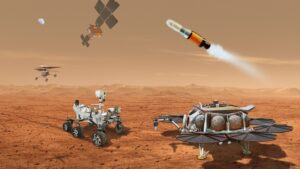
NASA and the European Space Agency have selected a location on Mars to cache samples collected by the Perseverance rover, one step in the overall process of returning those samples to Earth.
The post Perseverance to establish sample cache for later return to Earth appeared first on SpaceNews.
China launches third and final module for Tiangong space station: state TV
Monday, 31 October 2022 09:40 China launched the final module of its Tiangong space station on Monday, state media said, the latest step in Beijing's ambitious space programme.
The module named Mengtian, or "dreaming of heavens," was "launched on a Long March 5B rocket from the Wenchang launch centre" on China's tropical island Hainan, state broadcaster CCTV reported.
Amateur photographers and space enthusiasts watch
China launched the final module of its Tiangong space station on Monday, state media said, the latest step in Beijing's ambitious space programme.
The module named Mengtian, or "dreaming of heavens," was "launched on a Long March 5B rocket from the Wenchang launch centre" on China's tropical island Hainan, state broadcaster CCTV reported.
Amateur photographers and space enthusiasts watch China tests engines for moon mission rocket
Monday, 31 October 2022 09:31
China has conducted a series of successful hot fire tests for engines designed to power a launch vehicle capable of sending astronauts to the moon.
The post China tests engines for moon mission rocket appeared first on SpaceNews.
China launches 3rd and final space station component
Monday, 31 October 2022 08:06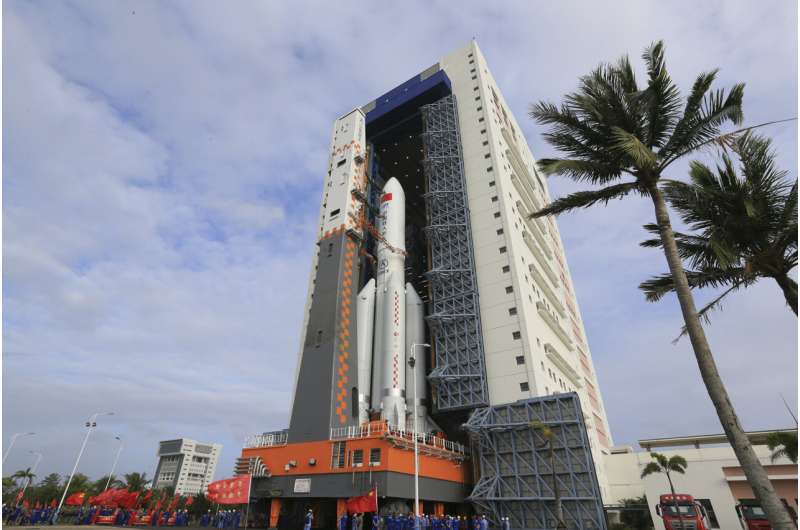
Halloween Crack for Halloween
Monday, 31 October 2022 07:00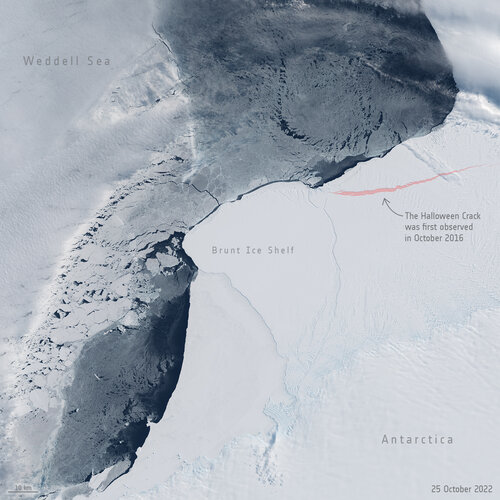 Image:
Halloween Crack for Halloween
Image:
Halloween Crack for Halloween SatixFy completes business combination with Endurance Acquisition Corp
Monday, 31 October 2022 04:57 SatixFy Communications Ltd. has completed its previously-announced business combination with Endurance Acquisition Corp. ("Endurance") following the approval of the business combination by Endurance's stockholders on October 25, 2022 and satisfaction of customary closing conditions.
In addition, on October 24, 2022, Endurance and SatixFy entered into a previously disclosed OTC Prepaid Forw
SatixFy Communications Ltd. has completed its previously-announced business combination with Endurance Acquisition Corp. ("Endurance") following the approval of the business combination by Endurance's stockholders on October 25, 2022 and satisfaction of customary closing conditions.
In addition, on October 24, 2022, Endurance and SatixFy entered into a previously disclosed OTC Prepaid Forw Lunar landing restored for Artemis 4 mission
Sunday, 30 October 2022 21:42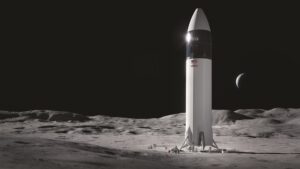
NASA has restored plans to include a lunar landing on its Artemis 4 mission to the moon later this decade, months after saying that the mission would instead be devoted to assembly of the lunar Gateway.
First NorthStar SSA satellites to launch in 2023 by Virgin Orbit
Sunday, 30 October 2022 15:21
NorthStar Earth and Space, a company planning a constellation of satellites to collect space situational awareness data, will launch its first satellites in mid-2023 with Virgin Orbit.
The post First NorthStar SSA satellites to launch in 2023 by Virgin Orbit appeared first on SpaceNews.
For U.S. Space Force, Raymond’s retirement marks the end of an era
Sunday, 30 October 2022 08:01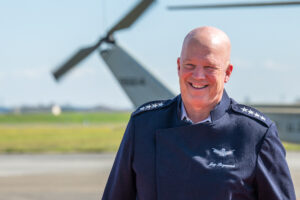
The first chief of space operations Gen. John 'Jay' Raymond retires Nov. 2 after 38 years of military service
The post For U.S. Space Force, Raymond’s retirement marks the end of an era appeared first on SpaceNews.
Traces of ancient ocean discovered on Mars
Sunday, 30 October 2022 07:22 A recently released set of topography maps provides new evidence for an ancient northern ocean on Mars. The maps offer the strongest case yet that the planet once experienced sea-level rise consistent with an extended warm and wet climate, not the harsh, frozen landscape that exists today.
"What immediately comes to mind as one the most significant points here is that the existence of an o
A recently released set of topography maps provides new evidence for an ancient northern ocean on Mars. The maps offer the strongest case yet that the planet once experienced sea-level rise consistent with an extended warm and wet climate, not the harsh, frozen landscape that exists today.
"What immediately comes to mind as one the most significant points here is that the existence of an o Magma on Mars likely
Sunday, 30 October 2022 07:22 Since 2018, when the NASA InSight Mission deployed the SEIS seismometer on the surface of Mars, seismologists and geophysicists at ETH Zurich have been listening to the seismic pings of more than 1,300 marsquakes.
Again and again, the researchers registered smaller and larger Mars quakes. A detailed analysis of the quakes' location and spectral character brought a surprise. With epicentres
Since 2018, when the NASA InSight Mission deployed the SEIS seismometer on the surface of Mars, seismologists and geophysicists at ETH Zurich have been listening to the seismic pings of more than 1,300 marsquakes.
Again and again, the researchers registered smaller and larger Mars quakes. A detailed analysis of the quakes' location and spectral character brought a surprise. With epicentres Beyond Gravity wins major contract from ULA for Amazon's Project Kuiper constellation launches
Sunday, 30 October 2022 01:05 In mid-March this year, Beyond Gravity (formerly RUAG Space) was awarded a contract to develop and deliver the dispenser system for Amazon's planned satellite constellation. Project Kuiper aims to provide affordable, high-speed broadband connections around the world.
Now, United Launch Alliance (ULA) has also awarded Beyond Gravity the contract to supply 38 payload fairings for its Vulcan
In mid-March this year, Beyond Gravity (formerly RUAG Space) was awarded a contract to develop and deliver the dispenser system for Amazon's planned satellite constellation. Project Kuiper aims to provide affordable, high-speed broadband connections around the world.
Now, United Launch Alliance (ULA) has also awarded Beyond Gravity the contract to supply 38 payload fairings for its Vulcan SpaceX California launch sends 53 more Starlink satellites into orbit
Sunday, 30 October 2022 01:05 SpaceX launched a Falcon 9 rocket carrying 53 more Starlink satellites into low Earth orbit on Thursday.
The flight lifted off from Vandenberg Space Force Base northwest of Los Angeles and headed southeast over the Pacific Ocean in its first minutes.
It was the 49th SpaceX mission of the year and roughly 75% of the flights launched Starlink satellites. Before the latest launch, S
SpaceX launched a Falcon 9 rocket carrying 53 more Starlink satellites into low Earth orbit on Thursday.
The flight lifted off from Vandenberg Space Force Base northwest of Los Angeles and headed southeast over the Pacific Ocean in its first minutes.
It was the 49th SpaceX mission of the year and roughly 75% of the flights launched Starlink satellites. Before the latest launch, S 